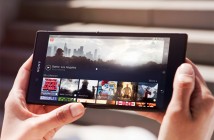
MacBook Air (2012) was announced and released last week. With a one year gap from 2011 models, does the new line really have that much difference at all? I hate to break it to you but if you just bought an 11- or 13-inch MacBook Air (2011), you’d feel pretty stupid you didn’t wait for the new line. Sure, they look the same. But you can tell them apart once their hardware is examined. That being said, buyers with fat wallets and devotion for all-things-Apple will be very pleased with the 2012 MacBook Air.
Design
Nothing’s changed. It has the same svelte design as its previous model, measuring 0.68 inches in thickness. Apple still offers it in two flavors; a smaller 11-inch MacBook Air (2012) for those who prefer an ultra-portable form, and a larger 13-inch model for those looking for a standard-sized netbook. While it sees some internal upgrades, weight remains unchanged for the 11- and 13-inch MacBook Air (2012). I don’t really find anything interesting about its design save for the chiclet-style backlit keyboard, white finish, and sleek profile.
Hardware
MacBook Air (2012) packs a lot of upgraded hardware compared to last year’s release. Both 11- and 13-inch models now have Ivy Bridge processors coming from Sandy Bridge. As expected, the 13-inch MacBook Air (2012) has a better-performing Core i7 chip compared to its 11-inch counterpart which has Core i5. One can also expect a boost in graphics with the new Intel Graphics 4000 though it won’t be enough for intense gaming. For that, you have MacBook Pro. Base RAM was increased to 4GB on both new models and can be configured to 8GB. The FaceTime camera was upgraded in both models as well to support 720p HD resolution.
| MacBook Air (2011) | MacBook Air (2012) | |
|---|---|---|
| Thickness | 0.68 inch | 0.68 inch |
| Weight | 2.38 lbs (11-inch), 2.96 lbs (13-inch) | 2.38 lbs (11-inch), 2.96 lbs (13-inch) |
| Display resolution | 1366 x 768 (11-inch) 1440 x 900 (13-inch) |
1366 x 768 (11-inch) 1440 x 900 (13-inch) |
| CPU | Sandy Bridge Core i5 (11-inch) Sandy Bridge Core i7 (13-inch) |
Ivy Bridge Core i5 (11-inch) Ivy Bridge Core i7 (13-inch) |
| Graphics | Intel HD Graphics 3000 | Intel HD Graphics 4000 |
| Memory | 2, 4GB DDR3 @1333MHz | 4, 8GB DDR3L @1600MHz |
| Storage | 64, 128, 256GB | 64, 128, 256, 512GB |
| Connectivity | WiFi 802.11 a/b/g/n, Bluetooth 4.0 | WiFi 802.11 a/b/g/n, Bluetooth 4.0 | Ports | 2x USB 2.0, Thunderbolt, SD card slot (13-inch only) | 2x USB 3.0, Thunderbolt, SD card slot (13-inch only) |
| Battery life | 5-7 hours | 5-7 hours |
| Power | MagSafe | MagSafe 2 |

The new MacBook Air series still have solid state drives but maximum storage is double what it used to be. How does 512GB SSD sound? The 11-inch MacBook Air (2012) is offered in two options – 64 and 128GB. The 128GB model can be upgraded to 256GB or 512GB for $300 and $800, respectively. Meanwhile, the 13-inch MacBook Air (2012) is offered in 128GB and 256GB; the latter being upgradeable to 512GB for $500.
Clearly, the 2012 MacBook Air is much more powerful but this is not without disappointment. The 11-inch model still lacks an SD card slot and HDMI support. Also, you can’t expect it to be capable of handling graphic-intensive games. Just as its name suggest, MacBook Air was designed for light use.
Pricing and configuration
The 11-inch MacBook Air (2012) starts at $999 for a 1.7 GHz dual-core Ivy Bridge Core i5 processor and 4GB RAM. Price goes up to $1099 for a faster 2GHz Core i7 CPU and 8GB RAM. An additional $300 or $500 will get you 256GB or 512GB respectively, coming from a base RAM of 128GB that is.
The 13-inch MacBook Air (2012) has a starting price of $1,199 which is $100 cheaper than its predecessor. At that price, you can get a 1.8GHz dual-core Ivy Bridge Core i5 and 4GB RAM. Bump it up to $1,499 and you can have a Core i7 processor clocked at 2GHz as well as 8GB RAM. If you pay $500 more, you can upgrade the 256GB RAM to 512GB.




